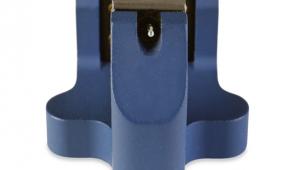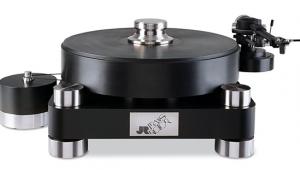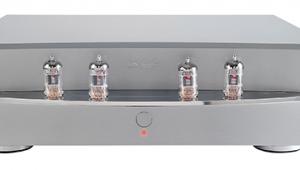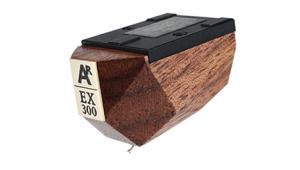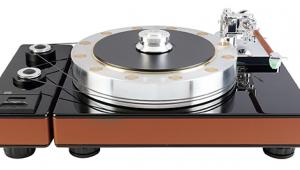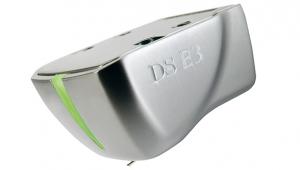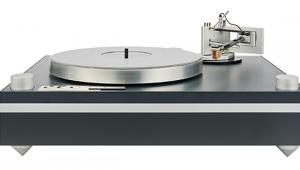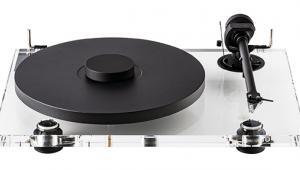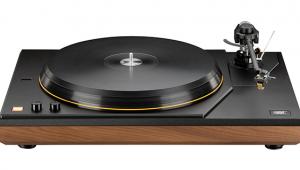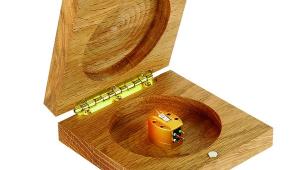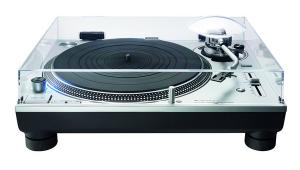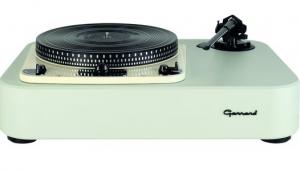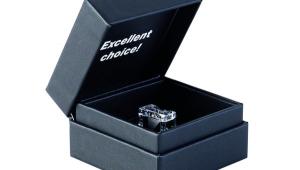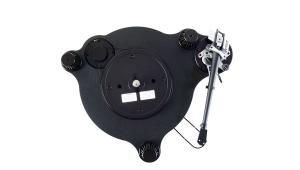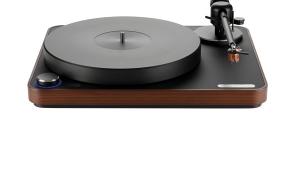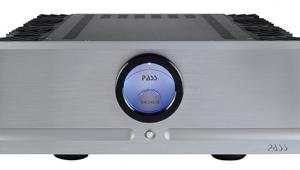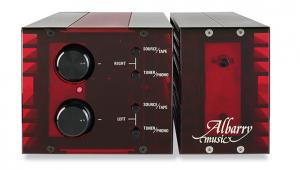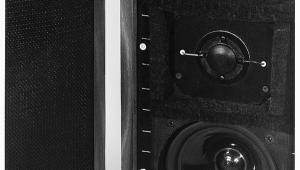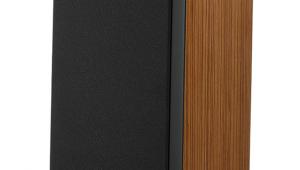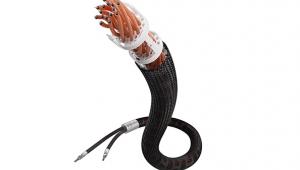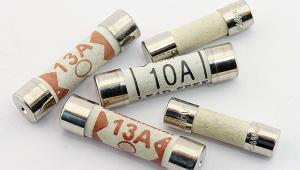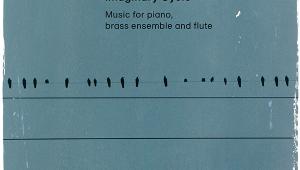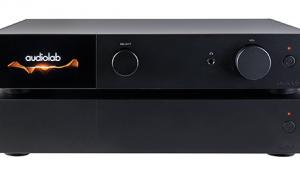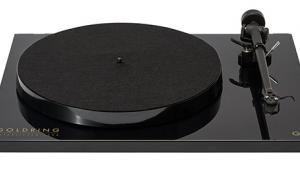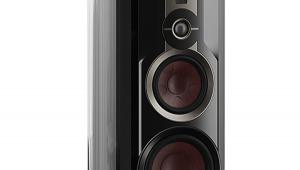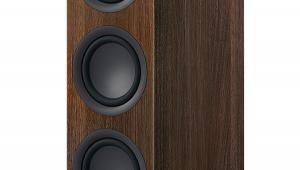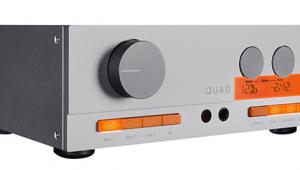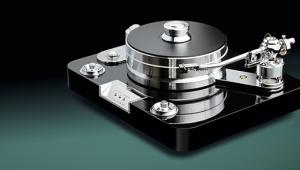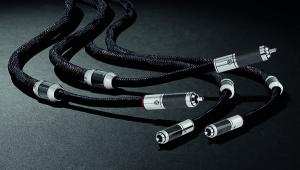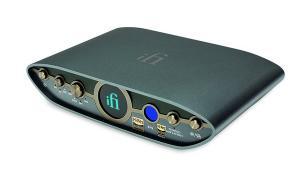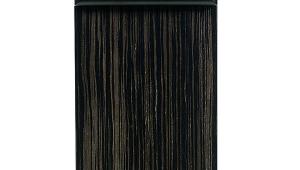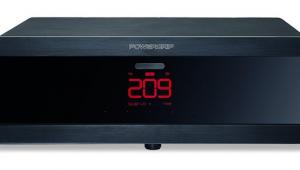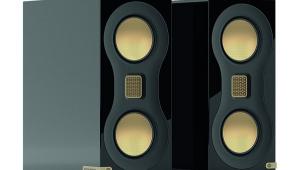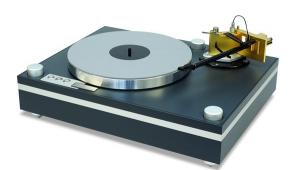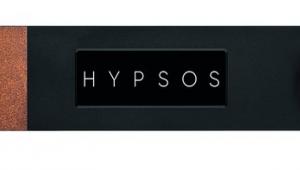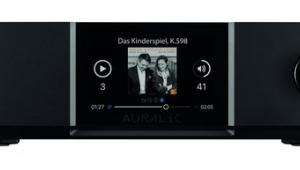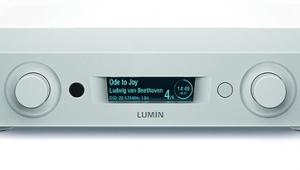SME Model 35 turntable
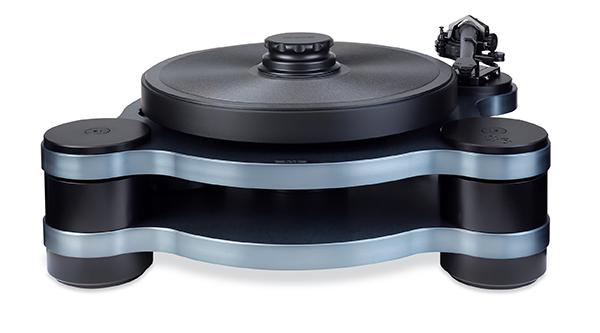

For a company that took three decades before introducing its first turntable, followed by a seven-year wait between the second and third models, SME seems now to be moving at a lightning pace. The flagship Model 60 arrived in 2022 [HFN Jul ’22], followed swiftly by Mk2 versions of the Models 12 and 15 over the next two years [HFN Jan ’23 and Jul ’24, respectively]. Now it has added two more turntables to its portfolio – the Model 8, replacing the Model 6 as SME’s entry-level unit, and the Model 35 seen here, slotting in below the Model 60.
Retailing for £35,999 in black or silver, and £37,999 for anodised Midnight Blue or the steel-blue-tinged Gunmetal option of our unit, the family resemblance of the Model 35 to the Model 60 is clear to see. The deck supersedes the Model 30 in the range, which has been moved to the ‘Legacy’ section of SME’s website, along with the Model 20 and ’15. That said, all three of those have received the ‘Mk2’ motor and PSU upgrades from the Model 60, and according to Cadence Group, owners of SME, can still be purchased on special order, complete with full warranty.
Big brother
Given that the non-legacy products now comprise the Model 8, Model 12 Mk2, Model 35 and Model 60, along with the Synergy package [HFN Mar ’19], there’s a bit of a gap in the range. SME won’t say whether a ‘Model 25’ is in the pipeline, but I’d be surprised if there weren’t sketches on a drawing board somewhere...
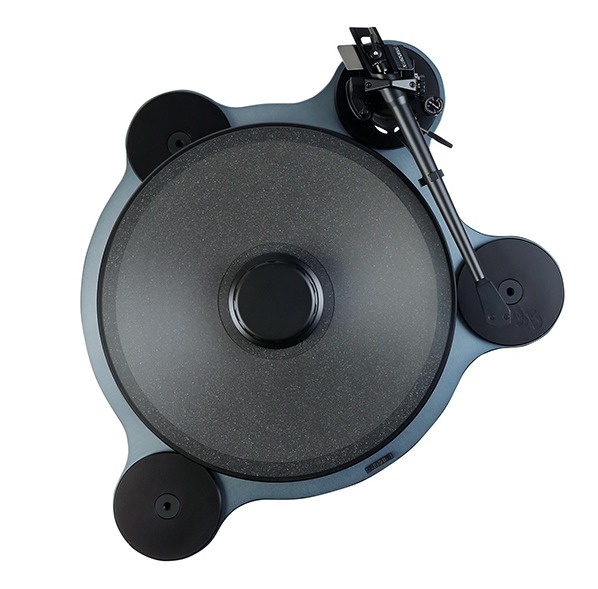
The Model 35 takes inspiration from the Model 60 but with changes in a few key areas. Staying the same are the 24-pole AC motor, and its external control boxes – one containing the mains transformer and unregulated DC power supply, the second sporting the turntable’s on/off and speed controls, and housing the regulated PSU and DSP motor drive circuitry. The enclosure of the latter item looks slightly different to that of the Model 60, but its contents are the same.
Nip and tuck
Also inspired by its range-topping sibling are the Model 35’s decoupling feet with multi-point isolation. These are adjustable for levelling but, as the eagle-eyed among you will have noticed, there are only three of them. This means the turntable’s footprint is a good deal smaller than the Model 60’s, a deliberate choice to make it more rack-friendly. Our ‘overhead’ shot [above] also shows the rear foot has been neatly tucked under the platter to reduce the overall depth. The suspension top cap fixings have also been hidden for cleaner lines in these areas.
The Model 35’s main bearing is again a high-carbon steel type spinning on a precision ball bearing, with sintered bronze bushings. This bearing is located in a silicone oil damping bath, which is identical in principle to that of the Model 60, albeit slightly different in design.
As before, its aim is to absorb any spurious resonances resulting from the rotation of the platter, including motor noise transmitted via the belt. Machined from aluminium alloy and weighing 4.6kg, the platter features an integral iso-damp mat, diamond-turned with a fine scroll, in its playing surface. The Model 35’s threaded centre spindle, combined with SME’s usual record clamp and support washer, closely couples the record to the platter’s surface.
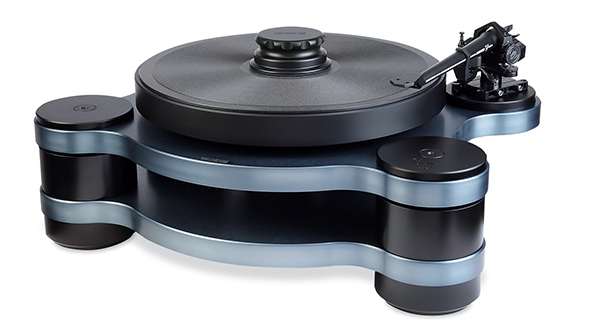
In suspension terms, the Model 35 doesn’t use metal springs, but instead employs 15 firm, rubberised bands per tower to support the upper plinth of its dual-layer chassis. Each tower is undamped and, in another departure from the Model 60, not fitted with any lateral support bands. One is fitted underneath the upper plinth to steady the chassis along the axis of the motor, but there is no other horizontal stabilisation. And while there are rubber ‘bumpers’ inside each suspension column to limit movement, the deck must be set up so that these are not in contact with the central pillar in each housing. As a result, the Model 35 is more complex to set up than other SME turntables and levelling of both the mounting surface, and the turntable chassis, are critical. It’s a job perhaps best left to your dealer.
Another headline upgrade of the Model 35 is that it is fitted with a brand-new SME tonearm. The Series Vi (‘Improved’) will also be available on the Model 12 Mk2 going forward and effectively replaces the Series V, although the standard variant will continue to be fitted to the Legacy models.
The Series Vi retains all the original features of the Series V, including fine control over vertical tracking force/angle, but the tube is now a CNC-machined HD polymer, as introduced by the Series VA arm of the Model 60. Other than this, the design is identical, with a tapered, circular cross-section main armtube, high-specification ABEC 7 bearings and magnesium alloy bearing yoke. Internal wiring is from Crystal Cable, and this terminates in a small junction box on the lower chassis with two well-spaced phono sockets and a chunky grounding terminal.
![]() Dynamic deck
Dynamic deck
With an Ortofon Cadenza Black moving-coil cartridge installed in the Series Vi arm, and the Model 35 connected to my reference Yamaha C-5000/M-5000 pre/power amp combination [HFN Aug ’20], the result was a system sound that enthralled from the first few bars of music. I’ve long believed there aren’t many turntables that offer the dynamics, solidity and sheer scale of an SME design – and these characteristics are very much present in the Model 35’s performance. Such is its dynamic range and sense of effortlessness, it makes many other turntables sound flat by comparison.
The essential character of the Model 35 is seemingly very neutral, no doubt informed by its excellent pitch stability [see PM's Lab Report]. Musical information is extracted from the LP grooves without any feeling of artifice, leading to a realism that is quite astonishing at times. Many good-quality turntables will leave you thinking, ‘that’s a superb representation of a double bass in front of me’. The Model 35 is more likely to leave you thinking, ‘that’s a double bass in front of me’.
Another dimension
Listening to ‘It Had To Be You’ from Lyn Stanley’s recently released Tribute To 1924 [AT Music ATM3112], the Model 35’s vivid evocation of her jazz band within the space between and in front of my loudspeakers was jaw-dropping. This is a first-class pressing, with mastering by Bernie Grundman, but I’ve not yet heard it ‘come alive’ in such a three-dimensional manner. I swear I could have leaned forward and tapped Luis Conte’s percussion.
Helping here is the openness that the Model 35 exhibits across the midband and treble. SME’s Series V arm has always been a master of this, but the new Vi takes it further, bringing even greater clarity. Softly tapped cymbals and tinkling percussion can sometimes float around the extremes of the soundstage, hoping to be noticed, but the Model 35 makes sure they are an integral part of the listening experience. Tracks like ‘Isn’t It A Little Late?’ from Eleanor McEvoy’s Yola album [Mosco MOSV102] seemed to be better focused across the board, as the Model 35 pulled the jittering percussive elements, behind her echoed vocal, firmly into place.
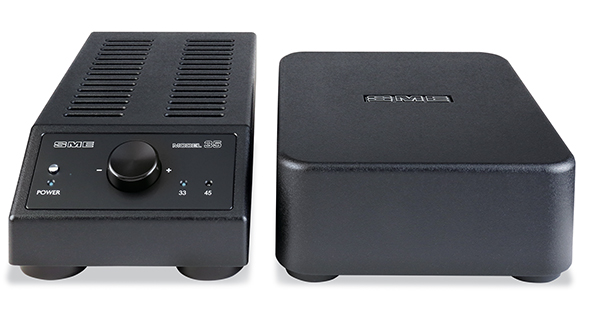
As well as this excellent clarity and eye for fine detail, the Model 35 impresses with its space and imagery. Some turntables project out at you, some stretch images wide, and both are always enjoyable, but SME’s new model can’t be pinned down to a simple character trait – it just follows the material. Playing Jennifer Warnes’ ‘Bird On A Wire’ [Famous Blue Raincoat; Impex Records IMP6021], the Model 35 was in wide mode, as this performance offers a great swathe of information stretched across the soundstage.
Rhythm and space
In contrast, William Ackerman’s ‘Visiting’, from the 1985 An Invitation To Windham Hill sampler [Windham Hill WHA 1], was much more of a ‘front-to-back’ delivery, its recorded acoustic being less broad but blessed with great depth and subtle emotion. The turntable made this easy to appreciate and remained composed at the track’s crescendo when acoustic guitar, fretless bass and electric Lyricon are giving it all they have. Each instrument kept its place in both spatial and rhythmical terms, avoiding crumbling into a disjointed mess.
Across my listening, the Model 35’s low-end handling was always a head-turner. The introductory bass guitar line on the title track of Donald Fagen’s Morph The Cat [Reprise Records 9362-49975-1] was as deep, fruity and taut as I could hope for, but I was surprised by the way in which it remained so when Fagen started to sing. The hairs on my neck were still responding long after the vocals (about – in Fagen’s words – ‘a vast ghostly cat-thing’ flying around New York) came in.
The measured stability of the Model 35’s drive system and the pace with which it whips the platter up to speed are reminiscent of a direct-drive design – so much so that it has many of that technology’s sonic hallmarks. Bass is almost endlessly deep, but tight, rhythmical and blessed with insight. There is a small frisson of warmth at all times, which is pleasant and a family trait shared with the Model 12 Mk2.
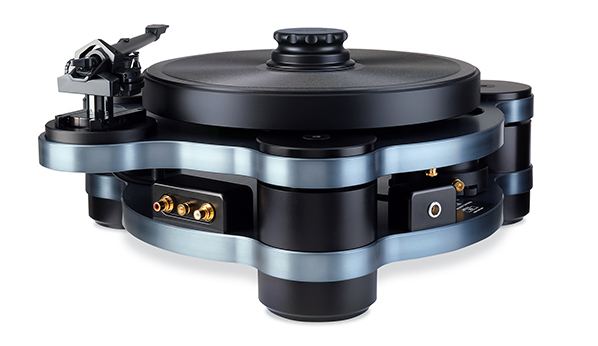
This does serve as a subtle reminder that this isn’t quite a Model 60, SME’s flagship turntable still having the edge in terms of sheer neutrality. But elsewhere the performance of the Model 60 is echoed in the way the Model 35 sounds realistic in the low frequencies. ‘Duet’ from Rob Wasserman’s Duets [MCA Records 7674221311], features just the man himself plus his bass, and the texture in each note was fully revealed. Moreover, not only did it convey his hand running up and down the instrument’s neck, I could hear the change in height as this happened.
Pulling power
Feeding a deck like this a diet of audiophile pressings highlights its best abilities, but how ‘lesser-quality’ records are dealt with is also telling. The Model 35 came up trumps here, picking the maximum music and rhythm from an old 7in copy of Real Life’s ‘Catch Me I’m Falling’ [MCA Records MCA885]. Synth bass and drums punched out with verve and the whole track romped along cheerily. SME’s turntable did not attempt to disguise the flattened depth perspective, or the slightly ragged top end, but still pulled every ounce of musical enjoyment from those much-played grooves.
Hi-Fi News Verdict
SME has done it again. The Model 35 turntable and Series Vi tonearm are brilliantly engineered and turn in a magnificently musical, poised and joyous performance. The level of insight and dynamic effortlessness that they offer is rarely short of incredible. Even better, the Model 35 gives a strong flavour of the Model 60’s capabilities at less than two-thirds of its price. That sounds like a bargain to me.
Sound Quality: 93%
